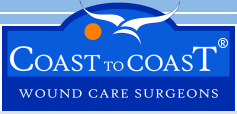 |
 |
 |
Your Time, Your Place, Your Way |
|||
|
COST
SAVINGS
HOW? Crisis - Nursing home costs are rapidly rising. The cost of nursing home care rose an average of 9.7% a year between 1985 and 1994. Average length of long-term-care nationally is 2 years. Frail and Elderly - Furthermore, per capita nursing home spending on the frail elderly aged 85 and over is over twenty times higher than spending on the young elderly, aged 65 to 69. Bedsores commonly affect 50% of those (70+), and the oldest-old (85+), the "frail elderly" or 18.2% of the nursing home population, the most vulnerable group. Second, the number of these frail elderly is expected to triple or quadruple as America ages. Medicaid - In addition, more and more seniors are qualifying for Medicaid by one means or another. When financial screening occurs, it primarily affects access for Medicaid beneficiaries. Unfortunately, nursing homes do not get enough money to offer the best of care, whenever there is a large group of Medicaid patients-(the longest stayers). It's not a diatribe against Medicaid; it's just what the public is willing to spend for the elderly. Bankruptcy - (Nursing Homes 2000):"-Five of the nation's 10 largest nursing home chains have filed for bankruptcy in the past year! The nursing homes in bankruptcy represent 10% of nursing homes." Deaths - (Nursing Home Deaths 2001):-The number of deaths in New York City nursing homes has jumped to 6,475 in 1999 from 3,891 in 1990, a 66% increase over the past decade. People are going into nursing homes older, nursing home administrators say. Fees - (Agency for Health Care Policy and Research -1992)-"Reported that 65% of elderly people hospitalized with broken hips develop bedsores and that doctors fees for treatment of bedsores amounted to $2,900 per person." (Patient Safety in American Hospitals 2004) - $2.57 million is spent on preventable decubitus ulcers annually in America) Options - (Nursing Homes - U.S News 2001)-"In the past decade, there has been about a 10% decline in residency as people find more options (Assisted living, assisted care, adult foster care, group homes, intensive care-home, etc.)" Coast to Coast Wound Care Cost Saving Solutions:
"We measure the risks, and weigh the outcomes." |
 |
||||||||||||||
|
|
|
|